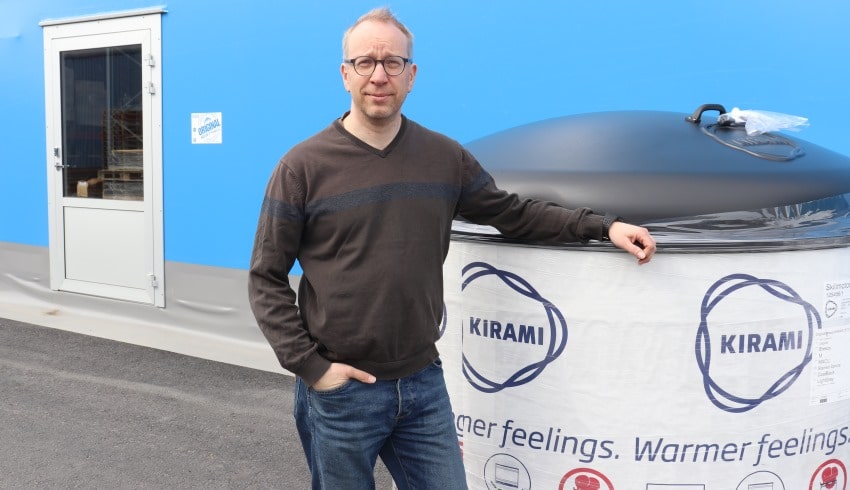Kirami, the largest hot tub manufacturer in the world, produces more than 10,000 hot tubs a year for its global clients. More than 50% of these are produced for the export market. When Kirami’s hot tubs leave the company’s Sastamala factory for shipping around world, they are prone to bumps and other shipping damage, especially during mid-transit loading. The Kirami team were understandably keen to prevent such damage.
“Transport damage was a big problem for us, and plastic sheeting alone offers no protection against forklift spikes. For example, a call from Switzerland to tell us about a broken outer panel immediately means significant additional costs for us. We wanted something that could withstand even the sharpest knocks,” says Eero Rantanen, Chief Information and Financial Officer at Kirami.
“I remember Eero Rantanen calling me and asking, ‘Aren’t you in the packaging business? We have a problem – can you solve it?’” recalls Lasse Borg, CEO of EPP-Pack Oy, a flexographic printing company that produces paper products under the Carccu brand.
It was clear that hot tubs need a tough, highly protective packaging material that can withstand even the hardest of impacts.
“It was immediately obvious that plastic wasn’t a viable option, as it’s not durable enough. And when it came to cardboard, there was an issue with the thickness. It was important to find a material that had the right properties and was cost-effective. We got some samples and took them to Kirami to test if they would hold up to the strain.”
”We packed one of the hot tubs in paper, and nobody thought the packaging would be durable enough. We fully expected it to tear apart. But after bashing away at it with wooden sticks for a while, we all started saying things like ‘there’s no way this is going to be broken with anything!’,” Borg explains.
The specially-produced paper’s toughness and rigidity made it an excellent packaging material and proved to be very useful for use in production. This paper also protects hot tubs from the sun’s UV rays and from fading.
“Paper is much more breathable than plastic, which means there aren’t the same moisture problems. The client also wanted a print on the paper, which was technically difficult due to its large size, but we rose to this challenge and successfully met their needs. We also supplied the Kirami factory with a roll stand to make it easy to tear the paper and wrap it around the hot tubs. A thin plastic wrap is layered on top of the paper to hold the package together. With some of the tubs, a layer of large bubble wrap is placed under the paper for extra protection. It’s a highly technical industrial package that achieves some fantastic results,” says Borg.
“At the time, our aim with the new packaging was not only to protect the product, but also to brand it. The packaging is no longer an unidentifiable plastic wrap and actually strengthens our brand profile,” Rantanen enthuses.
What Does Kirami Packaging Look Like?
Check out Kirami’s corporate video below. The hot tub packaging materials are shown from 1:48 onwards. As well as protecting the product from in-transit impacts, the printed packaged also strengthens the Kirami brand.

